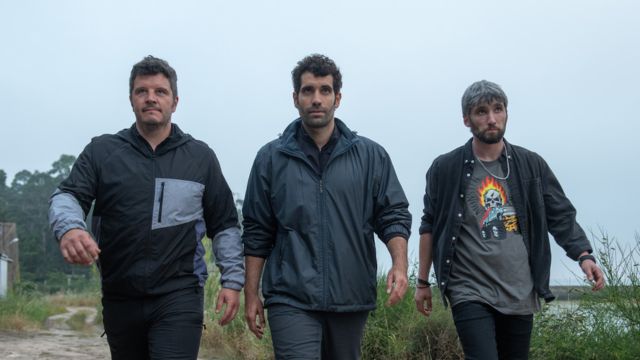“Gangs of Galicia,” a Spanish Netflix series, centers on a prominent criminal family in the town of Cambados in the region of the same name. The main character, Ana Gonzalez Soriano, discovers that her father may have been connected to the Padin drug trafficking family’s death after learning of his previous association with them.
In order to infiltrate the Padin crime family and get revenge on their leader, Jose, the lawyer flees Madrid and heads to Cambados.
But because the dad is still behind bars for his previous offenses, Ana ends up running into his son Daniel, who is attracted to her. It explores the prior relationship between Ana’s father, Jose Silva, and the Padin cartel while pursuing Ana’s revenge scheme.
As a result, the story alternates between the main, developing romance and the criminal world around it. The novel eventually explores drug trafficking crimes in Spain in a way that raises questions about its veracity, of course.
Gangs of Galicia: The Padin Drug Cartel’s Real-Life Inspiration
As it uses drug trafficking as its main source of inspiration, “Gangs of Galicia,” also known as “Clanes” in the original Spanish, maintains some of its realistic foundations. The show has a foundation in the events that occurred in Spain in the 1990s, even though it fictionalizes most of its plot.
Operación Nécora, the Spanish government’s extensive investigation to apprehend drug dealers in Galicia, was underway at the time. As a result, a key figure on the police radar continued to be Manuel Charlín Gama, a notorious drug lord from Galicia who was well-known throughout Europe.
During the 1980s and 1990s, Charlín operated a profitable narcotics operation in Galicia with a clan primarily composed of close relatives in positions of authority, including his wife and children. As a result of their involvement in the smuggling of cocaine, hashish, and tobacco, the clan became known as “Los Charlines.”
The family reportedly used speedboats to smuggle cocaine and hashish into Spain via links in Colombia and Morocco, respectively. Even though the drug kingpin was apprehended by Operación Nécora in 1990, the year the investigation began, Charlín was released from prison in 1994 after being found not guilty.
Manuel Baúlo, a loyal member of Charlín’s gang who was in charge of smuggling transportation, turned on the cartel that same year. Hitmen from Colombia killed him shortly after. However, by 1995, the patriarch of the Charlines had been arrested and imprisoned as a result of his testimony. Although Charlín was never found guilty of being involved in Baúlo’s murder, it is still widely believed that he was responsible for the former’s demise.
Although there are many elements to Charlín and his gang’s criminal activities, the events leading up to and following the encounter with Baúlo appear to be the main sources of inspiration for the story of “Gangs of Galicia.”
The main conflict in the program arises when Ana learns that her father was formerly a member of the Padin cartel and left Cambados when he sentenced Jose Padin to prison. As a result, Ana links the Padins to the murder after the guy is killed in an enigmatic assassination and swears to bring the criminal family to justice.
Since Baúlo died right away after testifying, there was no room for resentful heirs, hence Ana’s character and story are all made up. However, there is no denying that the plot between Ana’s father, Jose Silva, and Jose Padin bears a striking resemblance to Charlín and Baúlo’s actual past.
As a result, it is nevertheless clear that the show fictionalizes the several tales that develop around its core plotline while drawing inspiration from reality. In the end, the show’s association with Charlín makes it more grounded in reality.
Combining Realistic Inspirations with Fictional Storylines

The show’s criminal plot becomes fertile with realistic inspiration because of its relation to the actual events involving Manuel Charlín Gama and Manuel Baúlo. The core plot of Ana’s vindictive endeavor, which leads to a frenzied romance, is still limited to fiction, though.
The need for an accurate representation of Spain’s criminal underground is the source of the show’s depiction of drug trafficking in Galicia and the government’ following crackdown on it.
The historical history of drug trafficking in Galicia served as a major source of inspiration for screenwriter Jorge Guerricaechevarría. The program maintains its similarities to Operación Nécora and Los Charlines for the same reason.
The other facets of the criminal world were also taken into account by him. For example, the show’s creative team sought advice from actual attorneys who have dealt with criminal organizations like drug lords. The same contributed to the accurate portrayal of Ana’s story. Additionally, it helped actress Clara Lago play the role authentically.
Thus, there is little doubt that the play was significantly influenced by real-life references. The way the show portrays character connections with one another is yet another crucial component of its authenticity.
The majority of these plots, such as the romance between Ana and Daniel, the terrible abandonment of the Silva family, and the internal dynamics of the Padin crime family, have no direct bearing on reality. As a result, the program continues to be a combination of fictional dramatization and real-life criminal motivation.
Are you interested in learning more about the compelling tale of “Gangs of Galicia”? For more information on how the show combines fictitious drama with real-life inspiration, see our website. Learn how the authors mix historical facts with exciting story turns to authentically depict Spain’s criminal underground!
